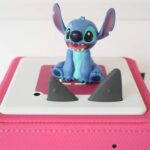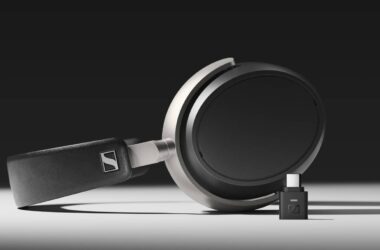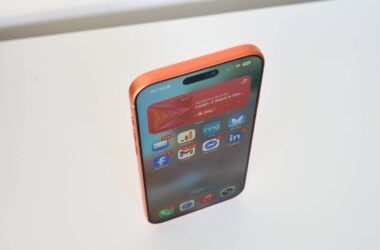Quick review
The good
The not-so-good
Kids and gadgets don’t often go together, a but a new gadget for kids could just give them independence. What is the Toniebox, and is it worth checking out?
Technology for kids can be difficult, especially working out what to keep them busy with. What do you get them? What do you give them?
Do you hand over them a toy that looks like a gadget, only to have it talk down to them and they subsequently get bored? Or do you hand them one of your hand-me-down pieces of tech — a phone or tablet — and find it doesn’t really fill the space they’re looking to fill, only to have them throw it across the room in a fit of frustration?
Little ones will inevitably ask for something to do at the most inopportune times, such as when you’ve just sat down with a cup of tea after cleaning up a mess they’ve just made.
This journalist/parent has never been a massive fan of the “just hand the kids an iPad” logic. It has moments where it works — keeping the kids calm in the car with Bluey makes total sense — but giving them an iPad to simply consume content when you need to keep them busy hardly seems like a way to have them do something. You’re just biding their time, and to an extent, yours, too.
It’s no wonder then that gadget makers are beginning to try other things. Interactive things. Things that get kids more excited than simply switching on a screen and staring into a liquid crystal abyss of entertainment.
The Toniebox is one of these things. A gadget that looks a little like a squishy box (almost a companion cube) with a pad up top and a speaker at the front, it’s definitely a different take on kids technology. And depending on how old your little ones are, it could just keep them busy and dancing and happy long enough for you to finish your cup of tea.
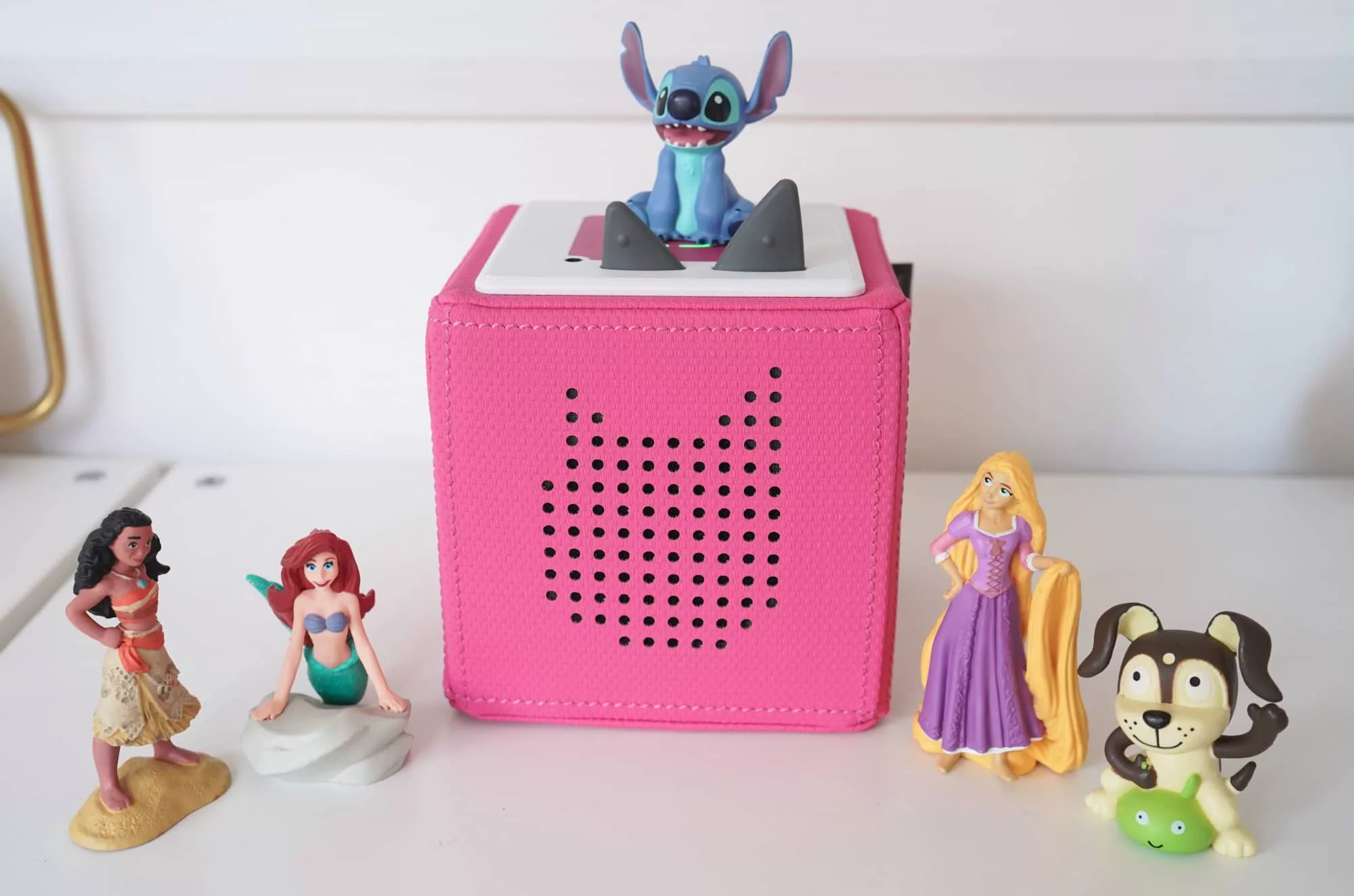
What is the Toniebox?
Just as the name says, the Toniebox is a box, and a box with a speaker in it. The box is encased in a soft plastic with obvious stitching, almost imparting a handmade LittleBigPlanet-ish feel to it, and it comes with some element of durability, too, being tumble-proof. The softness is the part that stands out; you could hug the Toniebox if you wanted to.
The box itself is powered and comes with a USB-connected charger, which runs a battery that lasts a good 5 or 6 hours, though the company says it can be used for up to 7.
What does it do?
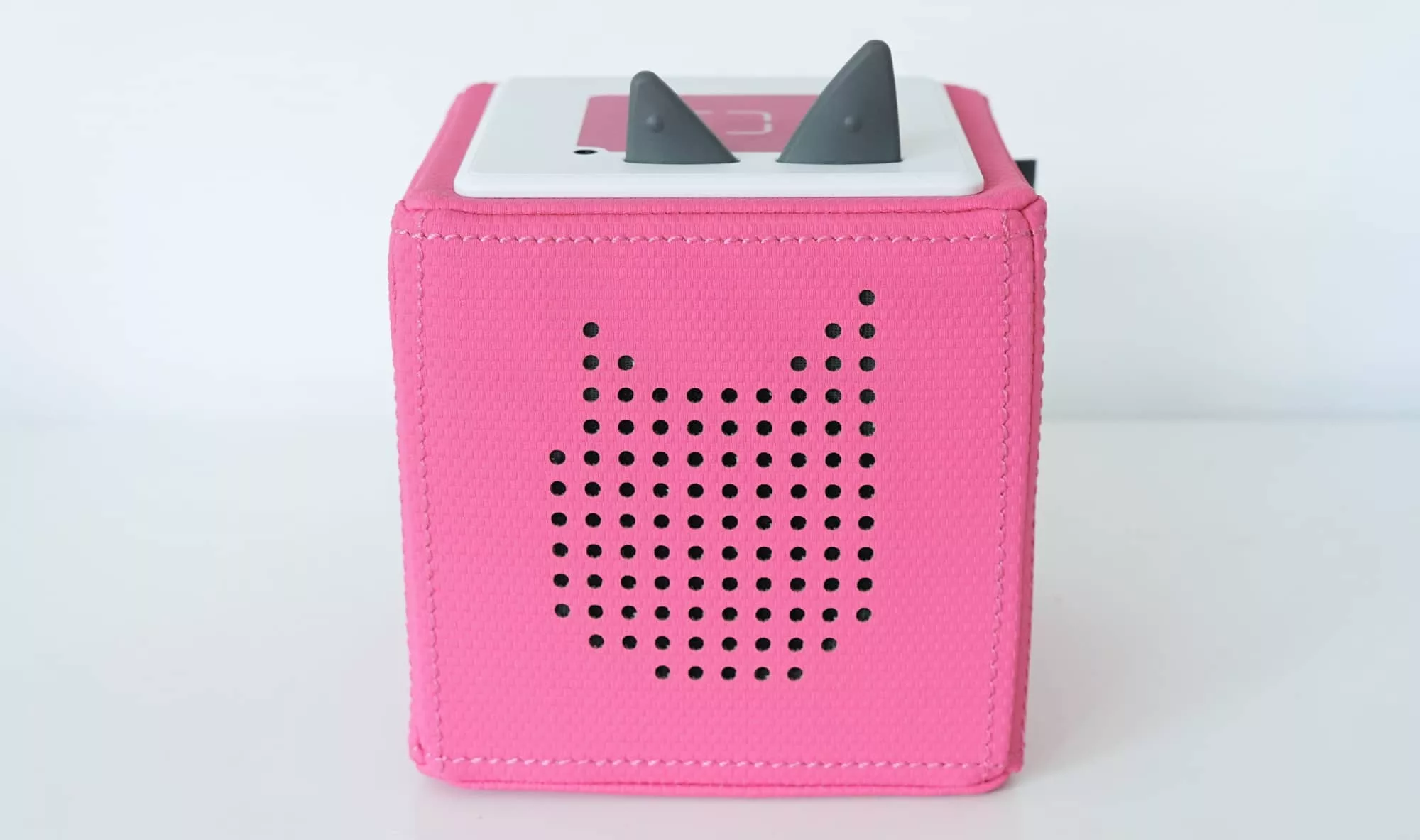
A media player of sorts, the Toniebox uses a combination of magnets and a Near-Field Communication (NFC) chip to talk to a speaker inside the box, with some controls that present themselves in as rather different ways.
There are two cat ears up top, one big and one small representing volume up and volume down. We’ll let you work out which is which, but it shouldn’t be too hard — it is made for kids, after all.
You can also find a 3.5mm headset jack up top in case your kids want to listen with headphones (or you want them to, parent’s prerogative and all). However, the main point of this thing is the speaker, which is seen by the clear grille of punched holes at the front.
Regardless of which output you choose, speaker or headphones, using the Toniebox as a speaker consists of two actions: picking a set of sounds and controlling it, both of which are designed for kids.
To pick a set of sounds, you simply need to pick a plastic figurine to put on top of the Toniebox. Each figurine includes an NFC tag, and is mapped to a set of sounds. You need to set up the Toniebox to talk to your WiFi so it can download the sounds it needs, but that’s a simple process, too. Walk through the app’s screens and in no time, Toniebox will be ready.
Once you’re good to go, you can grab a Tonie figurine, place it on top, and start listening to screen-free entertainment. Handy for folks who don’t want to give their kids another screen.
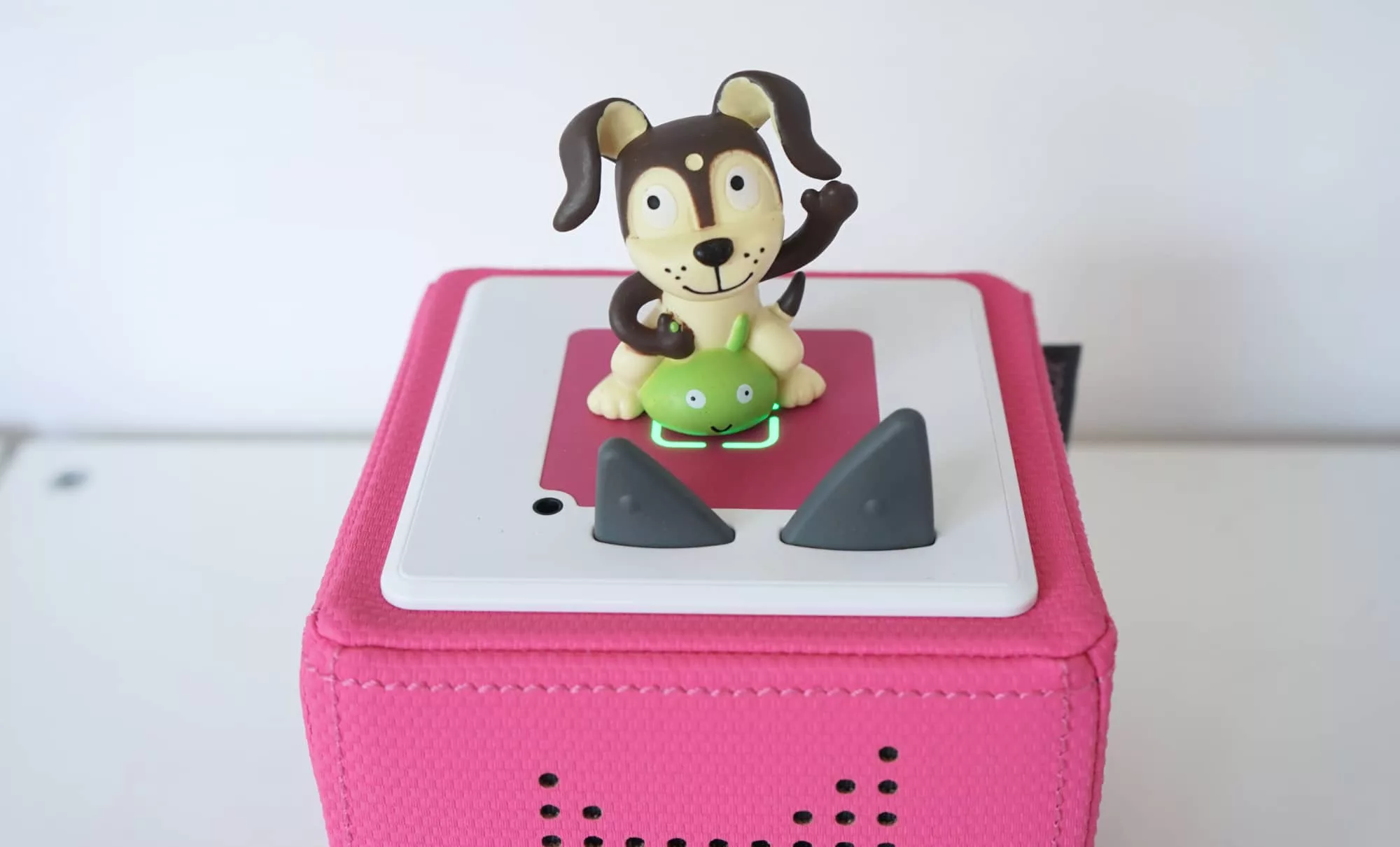
Does it do the job?
Drop a Tonie on the magnetic pad up top, and the speaker will find the audio files from your internet connection and get to work playing them. That’s what it is: a net-connected speaker.
Kids can switch song and soundtrack sets by replacing one Tonie for another, and sets will change. You can also bash the side of Toniebox to change tracks without changing the figurine itself; bashing each side with a good solid punch will cause the tracks to go forward or backward depending on which side you tap (and not very lightly, either).
This creative approach to music player controls means kids don’t need to have a light touch, and can just really go for their life. Bash on the left to go forward a song, bash on the right to go back a song. Bash, bash away to change the songs they’re listening to.
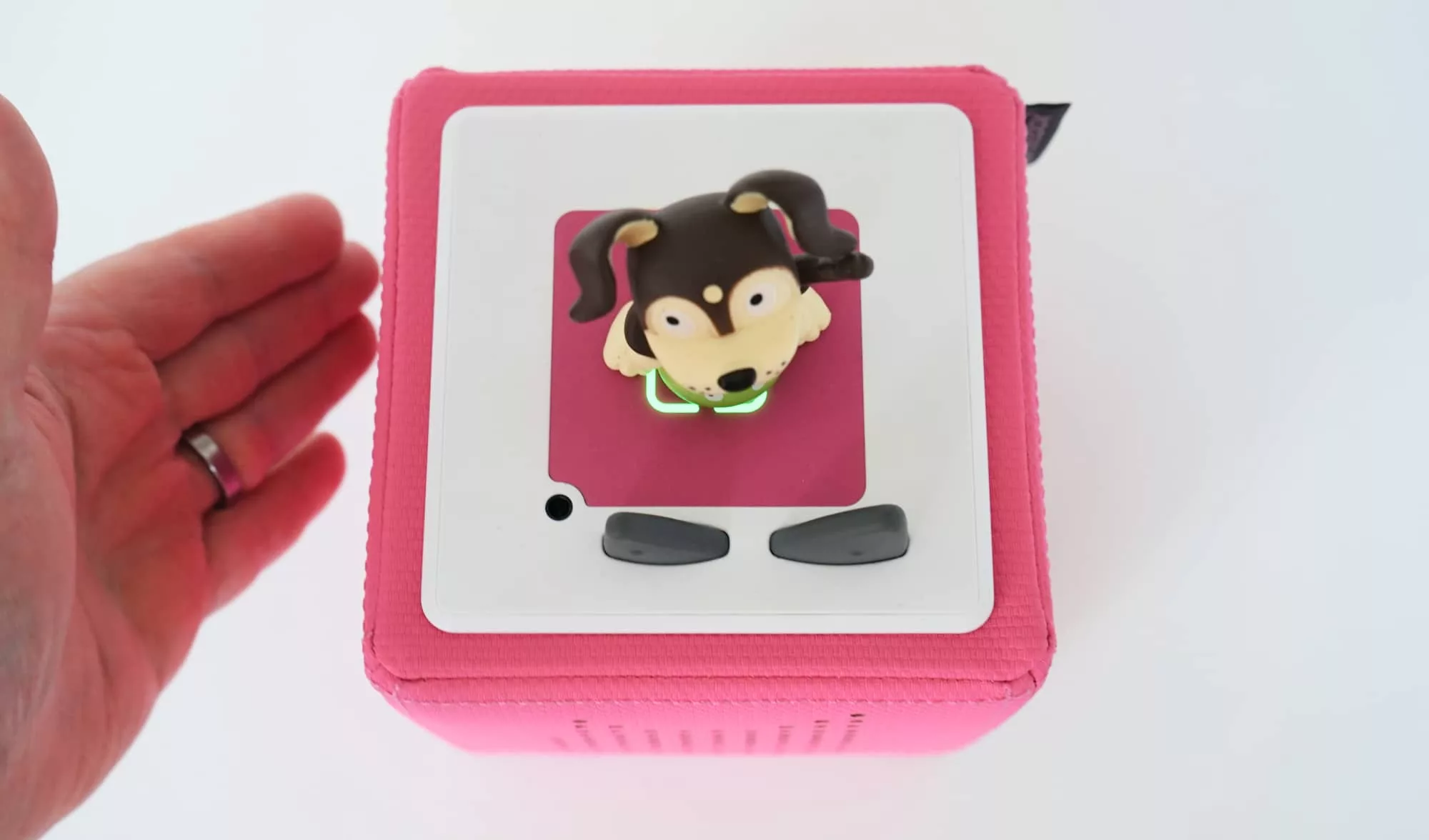
It might sound crazy, but it rewards little people with a modicum of independence, which is something they’re likely craving.
Take Ms 2, who loved walking around with the little puppy figurine that came inside the box, and wanted nothing more than to bash the sides of the Toniebox seemingly on repeat to get it playing “1, 2, 3, 4, 5, once I caught a fish alive” on repeat.
Sure, you might gradually find the song choices grinding, but the kids are having a ball, and dancing all the while they exert their own independence.
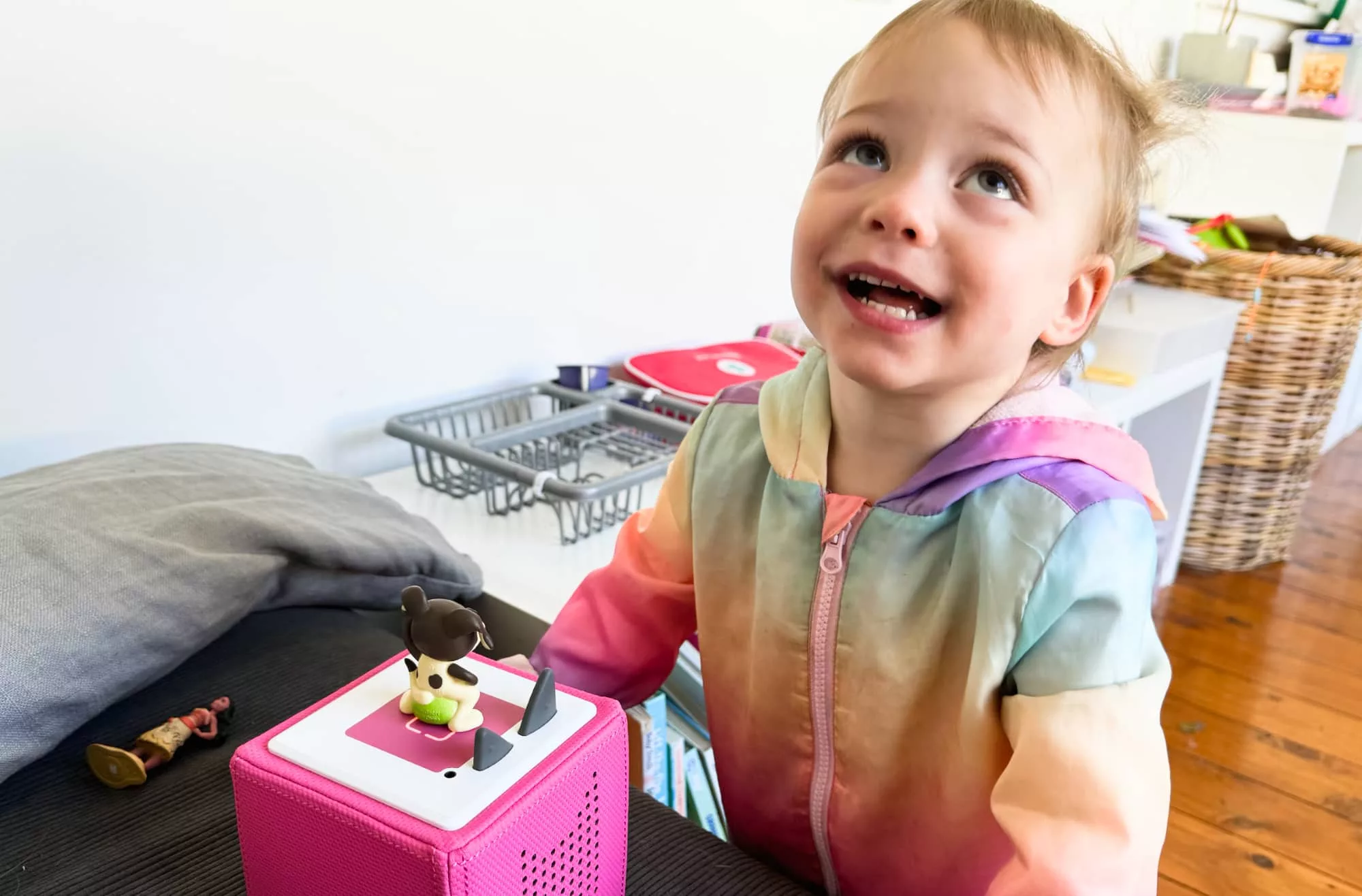
What does it need?
We have questions, however, because the TonieBox can feel a lot like a first-gen product in dire need of improvements.
Take the plug port: it could be USB-C like pretty much everything else, but it’s not. Instead, it’s an old school rectangular USB-A port that leads into a specific circular port for the bottom of the box itself. It’s just a specific port, and one that if you lose, you’ll be forced to buy again if you lose.
These days, everything is USB-C. Except this.

Even getting the plug port to charge the Toniebox has issues. You really have to jam it down on the circular port with a bit of pressure. It’s not just a simple plug and charge like you’d expect. Rather, expect to exert a bit of effort, otherwise the speaker won’t charge and your kids will be sad.
The plug port is one issue, but the volume is another.
We love the easy to control cat ears, allowing kids to easily raise the volume, at least in theory. But not every recording goes loud, and some just flat out don’t. We suspect that’s connected with a decibel limitation, but the volume notification seems louder than the recordings you play, and that is a problem.
As are the recordings themselves. While the nursery rhymes by random singers are fine, songs from Disney movies aren’t voiced by the original cast. Some sound close, but others are just off.
Take the version of “Shiny” from Disney’s Moana: it’s supposed to be Jermaine Clement. In this recording, it’s not. It’s clearly not. If this was Clement, he was clearly sick during recording.
This isn’t the original soundtrack from the movie; the sound is so off, it doesn’t take much to identify that this is a poor clone, and it happened for every figurine we saw. Virtually no Disney recording we played sounded like it should have.
In many cases, you’re getting the look of a Disney character, but a totally different imitation of a recording. Keep in mind that each Disney figurine costs $30 each, but you’re not getting the “official” soundtrack per se, something other people have worked out as well, not just us.
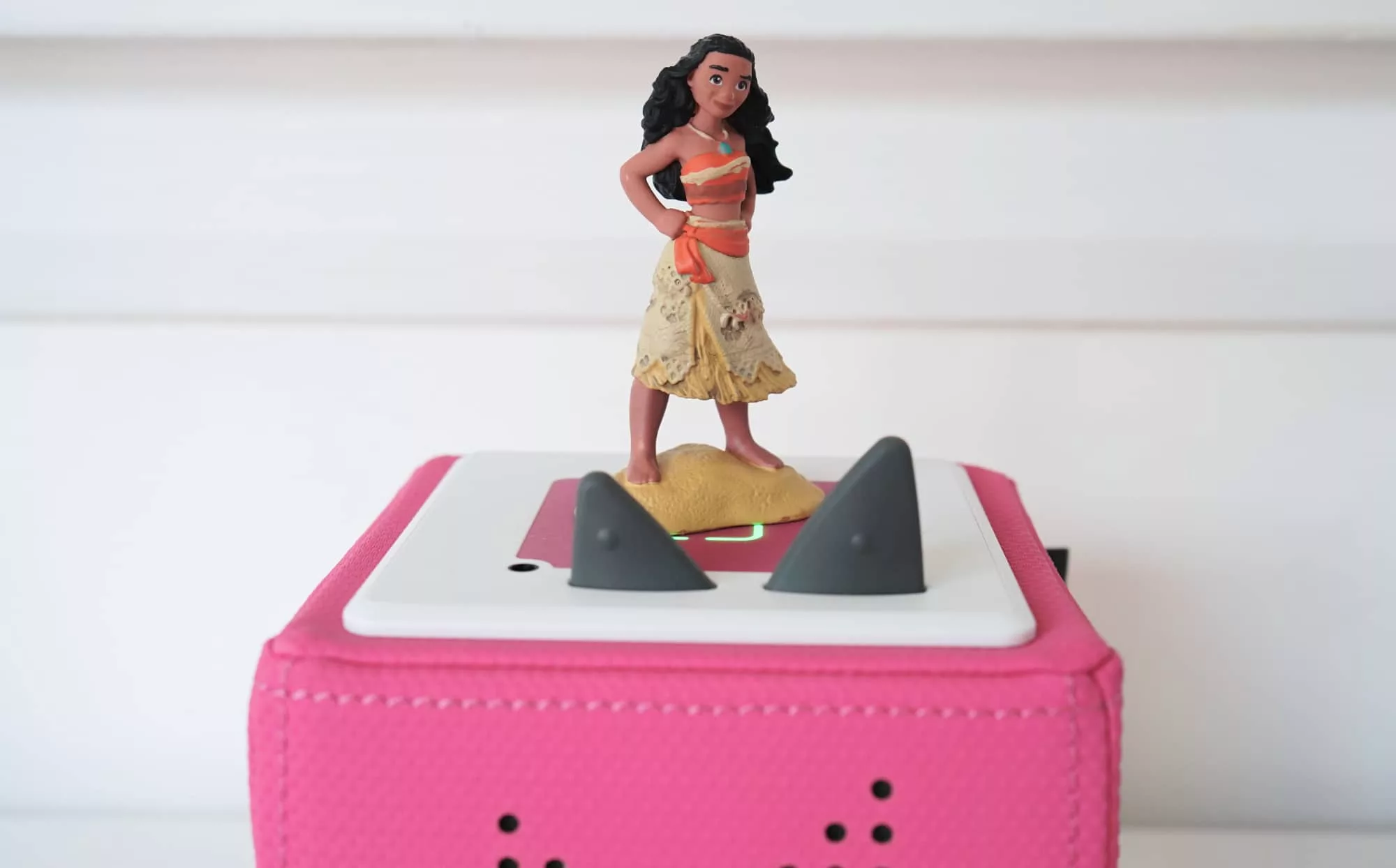
Is it worth your money?
It’s a combination of quirks that parents will pick up on, but kids may not. Songs sound like songs and a fun time can be had, but more than that, Toniebox is essentially promoting child-friendly independence for $200.
That might be more than what you’d expect a controlled media player and speaker to cost, but it’s also a little more than that.
The Toniebox is durable, able to survive drops. It encourages independence by getting kids to change their music and story selections by placing other Tonie figurines down on the box themselves. They can even control the box by giving it a bash on each side. It’s easy for kids.
Kids gadgets are typically not inexpensive, and the Toniebox doesn’t stray far from this logic. Is $200 too much?
Possibly, but it’s worth pointing out that it’s not just another Bluetooth speaker. Much like the Birde speaker for kids, it’s made for purpose with kids entertainment in a neat little toy.
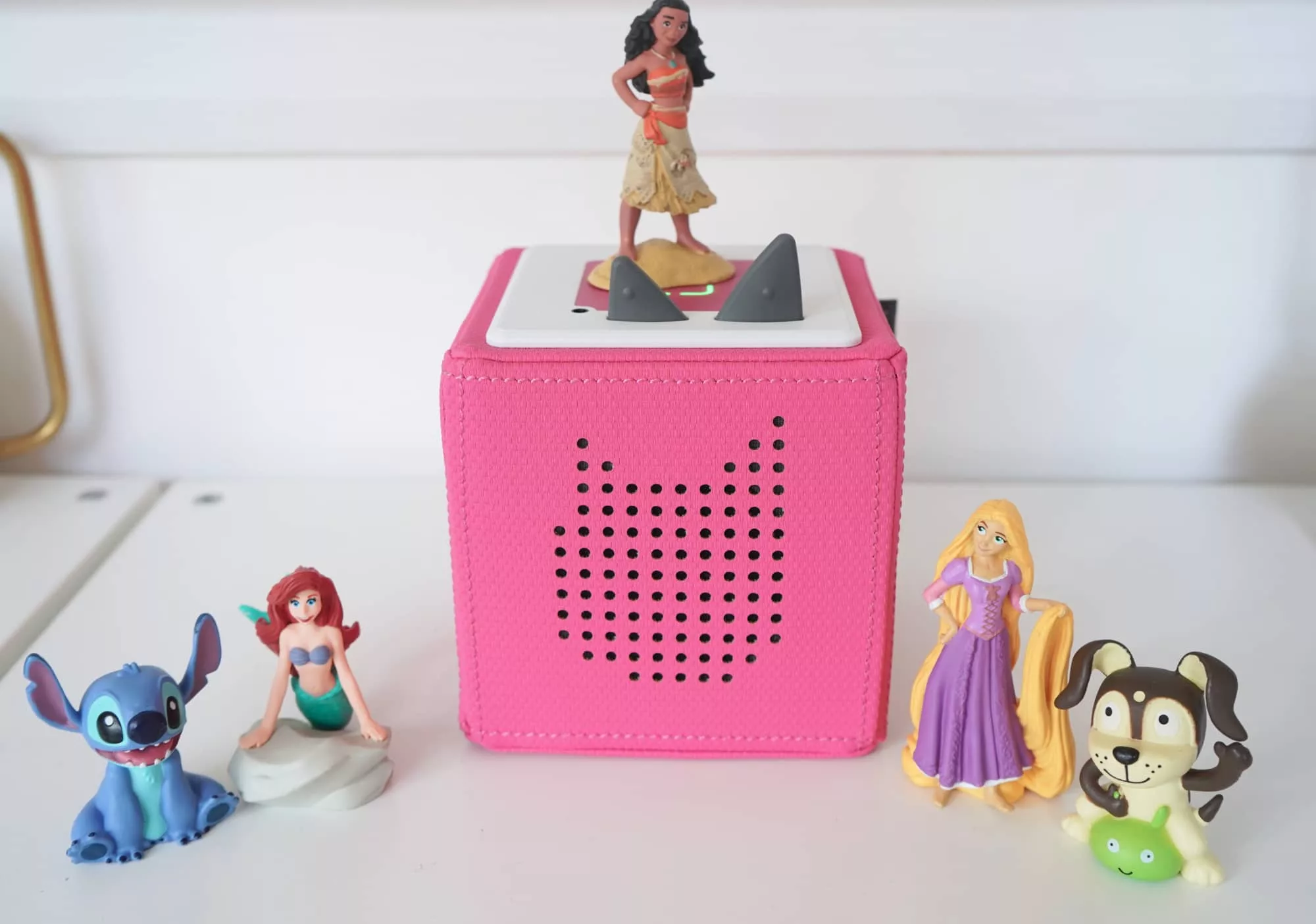
If anything, our issue with the cost stems less from the Toniebox itself and more from the Tonie figurines: priced at $29.95 each in Australia, they’re expensive, especially considering that you’re not getting the original recording. That’s like paying $30 for a soundtrack voiced by someone completely different, like expecting Dwayne The Rock Johnson as Moana’s Maui, and getting some random impersonation where the vocals just don’t land.
Most kids probably won’t care, though the perceptive ones will raise an eyebrow and wonder “is this really the real deal?” Ms 7 did with recordings from The Little Mermaid.
And you as a parent will wonder if this $30 could have been better spent on something else. Or more specifically, whether Toniebox could have landed a better deal with Disney or the other publishers to get authentic sounds on this little toy.
At least the audiobook recordings at the end of each sounded authentic with the original voices — we could hear David Ogden Stiers as Jumba in Lilo & Stitch — but it’s also difficult to know if these are the real deal. Once you’ve been tricked with the cloned recordings, it’s difficult to know whether you can trust anything in these recordings.
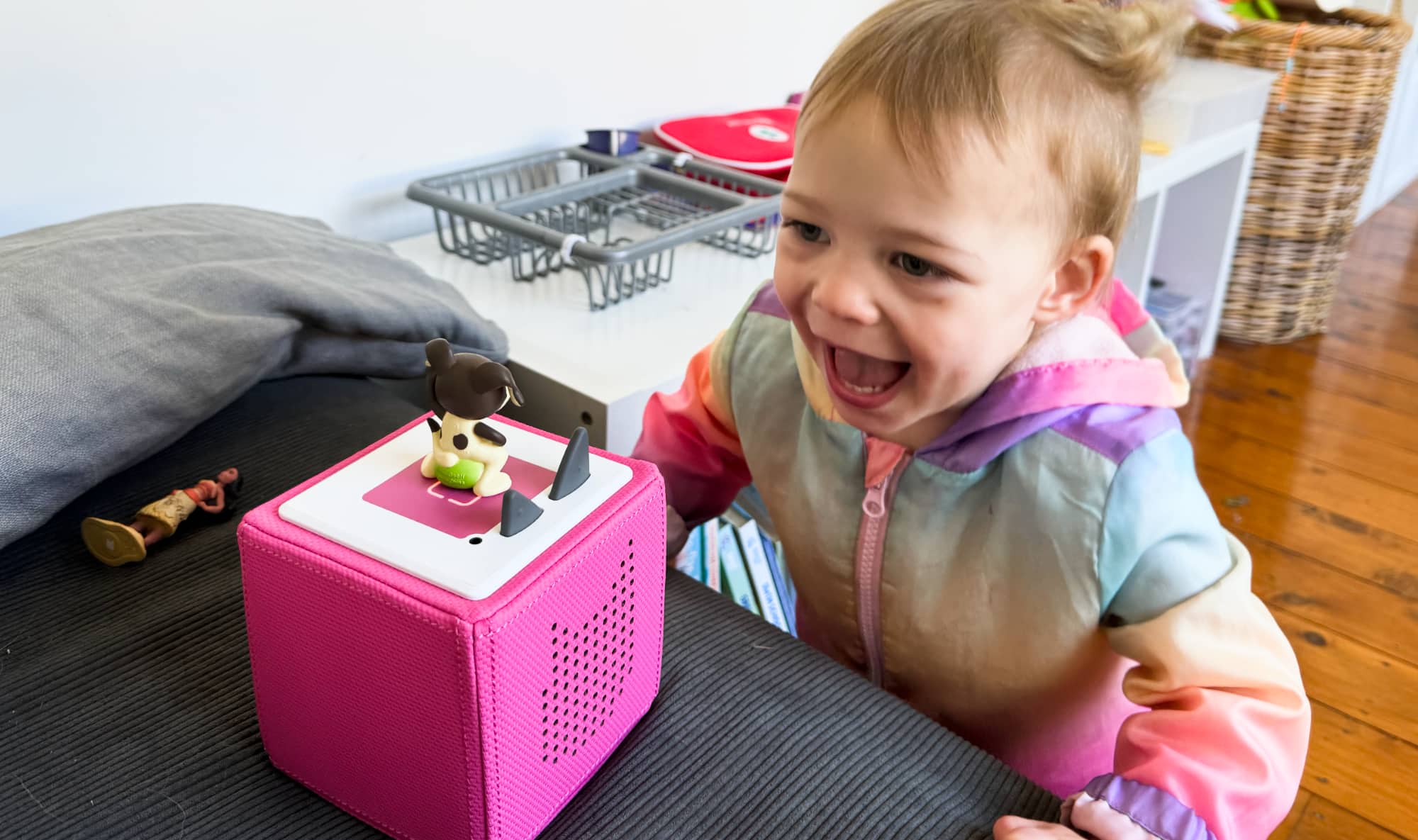
Yay or nay?
But kids will still dig what the Toniebox is, and we suspect some parents will, too. Promoting independence for little ones is intriguing, to say the least.
If anything, the most creative use for the Toniebox is the one we’re most intrigued about and didn’t get to try: personal messages and stories mapped to specific figurines. They’re the “Creative Tories”, $26 figurines that aren’t licensed, but are set up so you can record your own tracks to attach, supporting up to 90 minutes of content.
The possibilities for that could include a message from the relatives or a story only they could tell, or even a message from a parent going on a business trip that the kids could hear whenever they want to. Yes, technically a phone or tablet could do this, too.
But the Toniebox is does it in a physical way that your kids can listen to whenever they want to. They won’t need to nag you for a phone, and can just play and listen at their leisure.
And that’s certainly something positive, too, because if it promotes a little bit more independence, it might just help you to drink that cup of tea you originally sat down to have. This is all about keeping the little ones busy. Don’t grow up too fast, kids.
